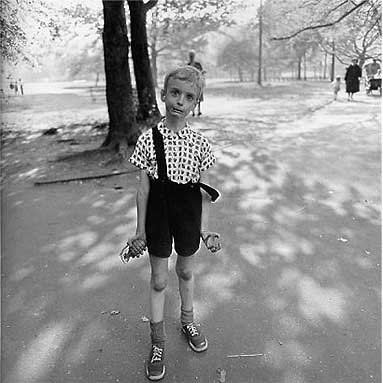
Image credit: Diane Arbus
As part of the final project for our “Rhetoric of Social
Documentary” class my students will be completing a brief documentary film on a
local issue and so we spent this week talking about the ethics of documentary
filmmaking and the discomfort many people feel in having their picture
taken. We began the class with a
discussion of Susan Sontag’s chapter “America, Seen Through Photographs,
Darkly” from On Photography in which she
considers the work of Diane Arbus and the shift in photography away from lyrical
subjects toward material that is “plain, tawdry, or even vapid” (Sontag,
28). Sontag explores the artist’s
decision to focuses on people she terms “victims” or “freaks” and argues that Arbus attempts to suggest a world in which we are all isolated
and awkward.
Recent comments
2 years 29 weeks ago
2 years 44 weeks ago
2 years 44 weeks ago
2 years 50 weeks ago
3 years 4 weeks ago
3 years 4 weeks ago
3 years 4 weeks ago
3 years 6 weeks ago
3 years 6 weeks ago
3 years 6 weeks ago